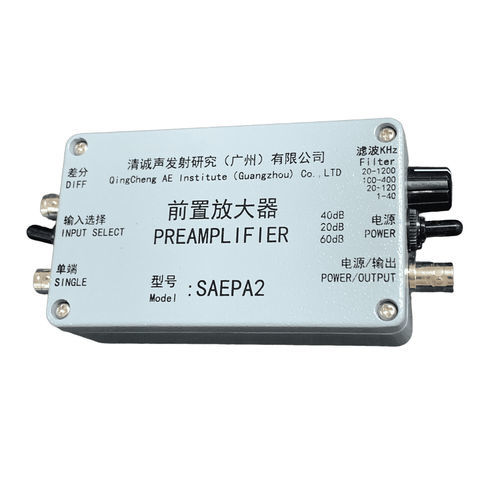The PAS preamplifier is an analog signal amplification circuit, whose input is the voltage output by the acoustic emission sensor, and the output is the amplified analog signal. The voltage signal output by the acoustic emission sensor is sometimes as low as a few microvolts. If such a weak signal is transmitted over a long distance, the intensity will inevitably decrease. The original sensor signal needs to be amplified by several times before long transmission. The commonly used amplification factor is by 40dB, and then transmitted to the signal acquisition unit through a high-frequency coaxial cable.
The acoustic emission preamplifier should have impedance matching and transformation functions. In order to prevent the impact of excessive input signals, it should also have protection capabilities against electrical shocks and recovery capabilities against blocking phenomena. And it has a relatively large output dynamic range.
Main Features:
• The preamplifier gain has three options: 20/40/60dB;
• Single ended/differential signal input methods;
• There are two power supply options available: phantom power supply, which is carried and supplied by signal cables; Or directly powered by an external power source.
• Built-in analog filters and there are four ranges of frequency filters for selection;
• Automatic Sensor Testing (AST) function, which can send a test signal to the sensor (under phantom power supply);
• Metal shell, shielded from electromagnetic interference, and resistant to electrical shocking.





